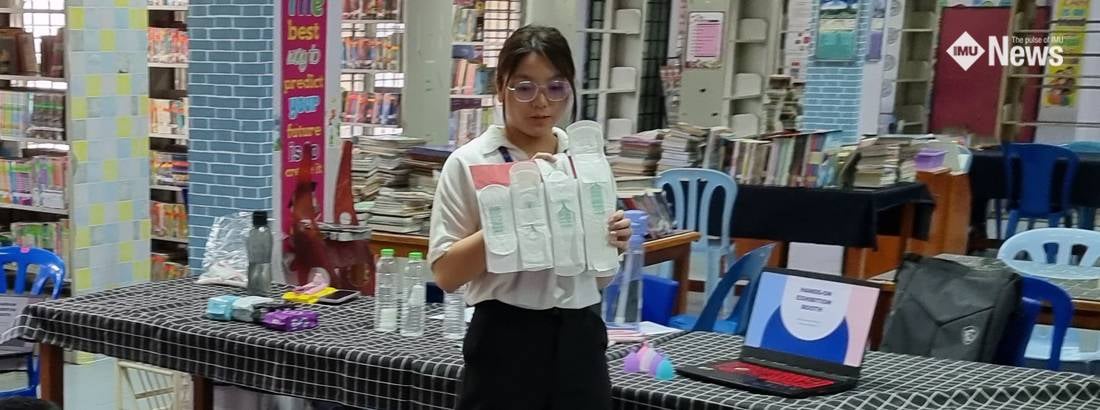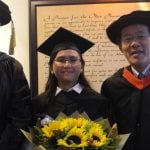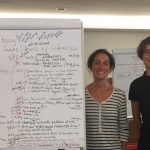To have our youth ready to succeed, is to have them grow up safe and healthy. As such, a group of second year IMU Bachelor of Science (Hons) in Medical Biotechnology students have taken the initiative to organise a sexual health education workshop entitled ‘Sexual Health Education for Adolescents (SHEA)’at SMK Bandar Puchong Jaya (B), along with their project advisor, Ts Dr. Wong Chiew Yen. This project aims to provide an open environment and adequate appropriate facts on sexual health to adolescents, providing them a head start in their journey to encourage a positive attitude towards their sexual and reproductive health and rights.
To the knowledge of a young Malaysian adolescent, sexual activity may a pleasurable notion, but sexual health is a grey area to many. This is especially so when sexual health education is greatly overlooked in the Malaysian public academia due to cultural and religious sensitivities. Hence, most students, from adolescents to adulthood, are left in the dark in terms of maintaining proper sexual health, be it preventing sexually transmitted diseases (STDs), accessing contraceptives, or awareness of sexual harassment. They may not even know whether the physical and sexual developments they are experiencing are normal.
The workshop had involved 80 Form 4 students from the school, starting off with a comprehensive introductory talk regarding sexual health and development. With an interactive conversation between the speakers and students, a safe space that is inclusive and trustworthy was established. The conversation addressed sexual and reproductive health issues, including reproductive anatomy and physiology, physical and mental sexual development, consent, pregnancy, and childbirth. To emphasise the concept of ‘consent’, speaker Tam Kah Wey created real life case scenarios using an analogy involving a cup of tea, which the students found amusing.

| Debunking Myths about Sexually Transmitted Diseases | |
|---|---|
| STDs are a common occurrence around us. However, how much do teenagers or adolescents understand the facts behind them? In the “Debunking Myths” activity by Rachelle Chin, a true or false interactive quiz session had put the students’ understanding to test. Myths surrounding STDs and various sexual health facts were debunked to create a non-judgmental attitude towards sexual development in humans. The activity was followed by a brief but concise talk on STDs covering all aspects by Earon Lee, ranging from symptoms, transmission, prevention to treatment, in hopes of enhancing their knowledge on safer sexual practices. | |
| Breaking the HIV Stigma | |
|---|---|
| Imagine living in a world where despite scientific advancements, social stigma against a medical condition continues to be a significant challenge to living a normal life. This is the reality of millions of people living with HIV worldwide. To break a stigma is to begin from the young. In addition to educating the students on STDs and contraceptives, these youth were also informed on the discriminatory practices, in order to promote a positive attitude towards HIV patients. | |
| Talking about sexual harassment | |
|---|---|
| Harassment and bullying are far more pervasive than people are willing to acknowledge. In the last session, students were encouraged to recognise the acts of sexual harassment and demonstrate critical thinking on possible solutions and self-protection. Various types of sexual harassments were introduced by speaker Low Jun Ying, including verbal, physical and visual types. This is to empower not only those who experience harassment at any level, but also people who are the perpetrators to clearly understand what behaviour crosses the line. | |
| Exhibition booth on self-hygiene and contraceptives | |
|---|---|
| PowerPoint slides and speech can only take you so far because there is no substitute for the power of hands-on experiences. To further instil the knowledge in students, SHEA hands-on team consisting of Lee Ying Qi, Joachim Tan, and Lim Yuan Jo, conducted physical demonstrations on products such as condoms, menstrual cups, sanitary pads, and tampons, at a hands-on exhibition booth. Unlike previous talks and quizzes, students were provided the opportunity to physically learn the correct technique of contraceptive and personal hygiene item usage. These products were shown with the idea that adolescents can understand methods to protect themselves against STDs, teenage pregnancies, and poor personal hygiene and use them confidently. The majority of the students expressed great interest in this session, where some even volunteered to demonstrate these products under the speaker’s supervision. | |
Despite the unexpected technical challenges, SHEA ended successfully with constructive responses from the students. According to the students’ feedback on SHEA, the content was very informative and knowledgeable. In addition, the school principal and the counsellor provided very positive feedback on this workshop as they understood the importance of the topic.
If talking about sexual health education is an unscalable wall, our duty in SHEA is to push through the barrier instead of climbing it to glimpse through the grey area. While one might be content in their own negligence; but in the case of sexual health, ignorance is not bliss. We hope that this article would motivate peers to educate people around them on the proper facts on sexual health.

Authors: Earon Lee Zheng Jian, Low Jun Ying, Tam Kah Wey, from IMU
Photo credits to: Lim Yuan Jo, Rachelle Chin Yuun Yeen, Joachim Tan Wei Hong, Lee Ying Qi, from IMU









